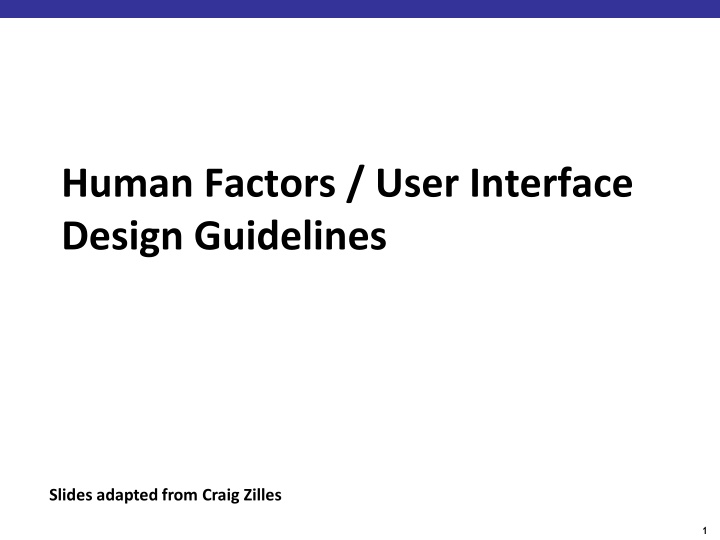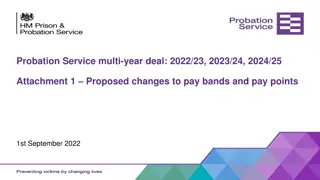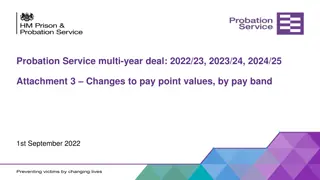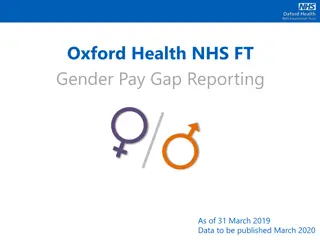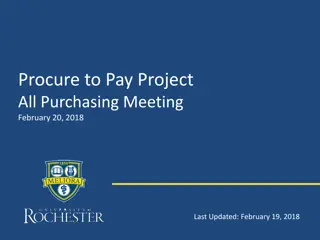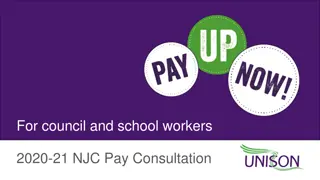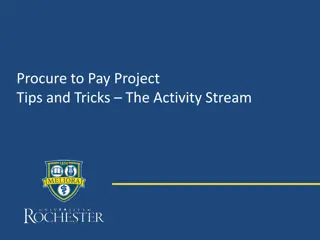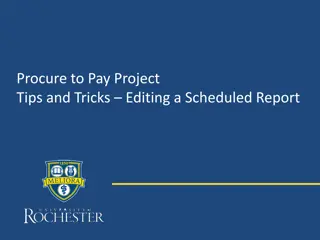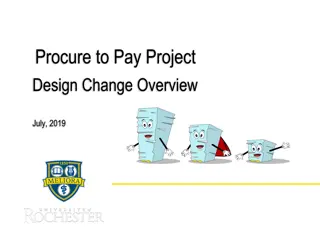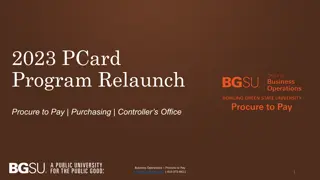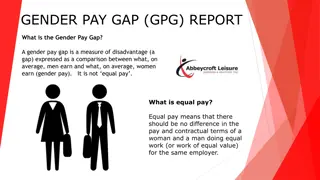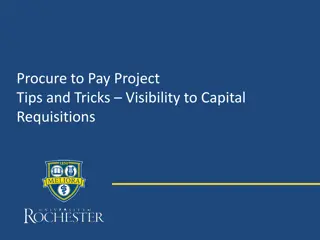Procure to Pay Project Weekly EUAT Meeting June 27, 2018
Agenda includes P2P status, EUAT results, Workday enhancements, recent decisions, tips and tricks, marketplace discussions, and P2P Early User Acceptance Test results. Issues addressed, decisions made, and future enhancements discussed during the meeting.
Download Presentation

Please find below an Image/Link to download the presentation.
The content on the website is provided AS IS for your information and personal use only. It may not be sold, licensed, or shared on other websites without obtaining consent from the author.If you encounter any issues during the download, it is possible that the publisher has removed the file from their server.
You are allowed to download the files provided on this website for personal or commercial use, subject to the condition that they are used lawfully. All files are the property of their respective owners.
The content on the website is provided AS IS for your information and personal use only. It may not be sold, licensed, or shared on other websites without obtaining consent from the author.
E N D
Presentation Transcript
Human Factors / User Interface Design Guidelines Slides adapted from Craig Zilles 1
How hard was week 10 Nave Bayes code review assignment? A. Easy B. Moderate C. Challenging D. Unreasonable 2
How long did week 10 Nave Bayes assignment take? A. Less than 3 hours B. 3 to 6 hours C. 6 to 9 hours D. 9 to 12 hours E. More than 12 hours 3
Design Terminology: Affordances An affordance is a relation between an object/environment and an organism that affords the opportunity for that organism to perform an action. For example, a knob affords twisting, and perhaps pushing, while a cord affords pulling. An affordance enables the possibility of some action. 7
Design Terminology: Signifiers A "signifier" is some sort of indicator, some signal in the physical or social world that can be interpreted meaningfully 8
User Experience design in a nutshell 1. Provide the affordances desired by users 2. Organize those affordances appropriately Information Architecture 3. Make your affordances obvious through correct use of signifiers Sounds pretty easy 9
User Experience Design is Hard Most users are not like you Users can t always tell you what they want But, they can sure tell you what is wrong. Consistent problems are the system s fault 10
You wont get it right the first time: UX Design is an Iterative Process Design Implement Evaluate Iteration can be costly Might have to re-write a lot of your code 11
Spiral Model of Design Use throwaway prototypes and cheap evaluation early in the cycle. Design Evaluate Implement 12
Usability How well users can use the system. Dimensions of Usability: Learnability: Easy to learn? Visibility: Is the state of the system clear? Efficiency: Once learned, is it fast to use? Errors: are errors few and recoverable? Satisfaction: is it enjoyable to use? Design Principles guide building usable systems Guided by findings in Ergonomics / Human Factors 13
Ergonomics / Human Factors the scientific discipline concerned with the understanding of interactions among humans and other elements of a system applies theory, principles, data and methods to design in order to optimize human well-being and overall system performance Characterizes the capabilities and limitations of humans 14
Human Factors: Power Law of Practice The log time to complete a task decreases linearly with of # practice trials. 15
Usability How well users can use the system. Dimensions of Usability: Learnability: Easy to learn? Visibility: Is the state of the system clear? Efficiency: Once learned, is it fast to use? Errors: are errors few and recoverable? Satisfaction: is it enjoyable to use? Design Principles guide building usable systems Guided by findings in Ergonomics / Human Factors 16
Design Principles for Learnability Consistency (in design and metaphors) Similar looking things act similarly Different looking things act differently In wording, location, color, ordering Use common words not jargon Recognition, not recall Labeled buttons rather than command languages 2 kinds of users: Beginners & Experts 19
Visibility Avoid affordances w/o signifiers E.g., pop-up menus by clicking on open space Avoid hidden modes Perceptual Fusion: Stimuli <100ms apart seems fused to humans 10 frames/second appears as moving picture 20
Efficiency: Hand motion tasks Moving mouse on screen Finger on keyboard/touchscreen Hand from keyboard to mouse Fitts s Law Time = a + b*log(D/S) log(D/S) = index of difficulty Bigger, closer = easier For mousing, S is infinite on edge of screen (good!) 21
Efficiency: Path Steering Tasks Fitts s law only for unconstrained movements Task much harder if constrained to tunnel 22
Design for Efficiency Fitt s Law & Steering Law Important targets: big, nearby, or at screen edges Avoid steering tasks Provide shortcuts Keyboard accelerators (for expert users) Bookmarks History 23
Reminder: Using the internet/citing sources It must be publicly available It must be a minority (<25%) of the code that you submit You must understand what the code does. Cite any distinctive or substantial code snippets (e.g., more than 2-3 lines) immediately preceding the code // code below derived from: // https://stackoverflow.com/questions/21626439/how-to-implement-the-java-comparable-interface public int compareTo(LineItem other) { return Integer.compare(this.position, other.position); } 24
Errors Principle: Protect User s Work Prevent Errors as much as possible: Selection rather than typing (within reason) Constrain user input Separate risky commands from common ones Undo (design pattern) Confirmation Dialogs (when appropriate) Understandable error messages 26
Simplicity Less is More Omit extraneous information, graphics, features Hick's Law: time to make a decision is proportional to log(# choices) 28
Simplicity, cont. Good graphic design Few, well-chose colors and fonts Group with whitespace Use concise language Choose labels carefully 31
How not to design https://www.uxpin.com/studio/blog/10-worst-design- failures-of-all-times/ 32
How do users hold phones http://www.uxmatters.com/mt/archives/2013/02/how- do-users-really-hold-mobile-devices.php http://scotthurff.com/posts/how-to-design-for-thumbs- in-the-era-of-huge-screens 33
